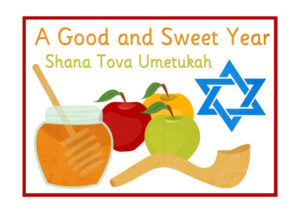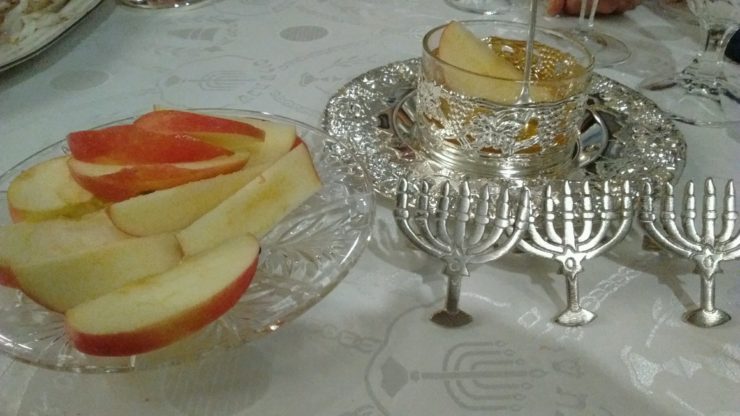Rosh HaShanah marks the beginning of a new year in Judaism. Literally meaning “head of the year” (Rosh = head, Ha = the, Shana = year), it is always celebrated on the First day of the month of Tishrei in the Jewish calendar. The month of Tishrei falls between September and October in the Western calendar, depending on the year. In the Bible, Rosh HaShanah will be found as Yom Teruah, sometimes translated as the Festival of Trumpets.
Since Rosh HaShanah is the New Year, it is also the first of the Jewish Holidays in the year. This Holiday starts the beginning of Jewish High Holy days followed by Yom Kippur ten days later, on the 10th of Tishrei. It is believed that on Rosh HaShanah G-d created Adam and Eve, and so the Jewish year count is now 5779 (as of 2019) since creation.
Nowadays, we celebrate the day in several ways.
- Perhaps the most important one is the sounding of the Shofar, which is a ram’s horn used like a trumpet. It is a commandment from G-d to listen to the Shofar on Rosh HaShanah (Leviticus 23:24). Most observant Jews go to synagogue to listen to the sounds of a Shofar. It is commanded not to work on this day (Leviticus 23:25)
- During the afternoon of Rosh HaShanah most Ashkenazi and Sephardic Jews gather at a natural water body to “cast away” their sins in the form of bread crumbs or small rocks, and some prayers are recited in a special service called Tashlich.
What Is Tashlich?
Tashlich (to cast away) is a service on the day of Rosh HaShanah in which we symbolically cast away our sins from the previous year in the form of bread crumbs usually into a flowing body of water. Some Jewish communities do it on this day or up to the last day of Sukkot, customs vary.
It is customary to eat certain foods that are traditional for this time of the year.
- Apple slices dipped in honey to symbolize a sweet New Year.
- Pomegranates to symbolize being fruitful because of the many seeds the fruit has. Some sources say that pomegranates have 613 seeds which is the number of commandments in the Torah.
- In some communities, a Seder is held with symbolic dishes and foods such as a head of a fish, dates, and carrots.
- A round Challah is served symbolizing the cycle of the year.
- Other foods are traditional in some communities, such as leek, cabbage, beets, gourds, and even a head of sheep.
Greetings for this Holy Day may include:
- Shana Továh, שנה טובה , meaning (Have a) Good Year.
- Shana Továh Umetukáh, שנה טובה ומתוקה , A Good and Sweet Year.
- A Gut Yor, in Yiddish, meaning A Good Year.
- Tizkú Leshaním Rabbót,תזכו לשנים רבות , a Sephardic greting meaning “Wishing You Many Years.”
- L’Shaná Továh Tikatevu V’tichatemu, “May you be inscribed and sealed for a good year.”
Yom Kippur comes 10 days after Rosh HaShanah, these ten days are called the Ten Days of Awe (or Repentance).

